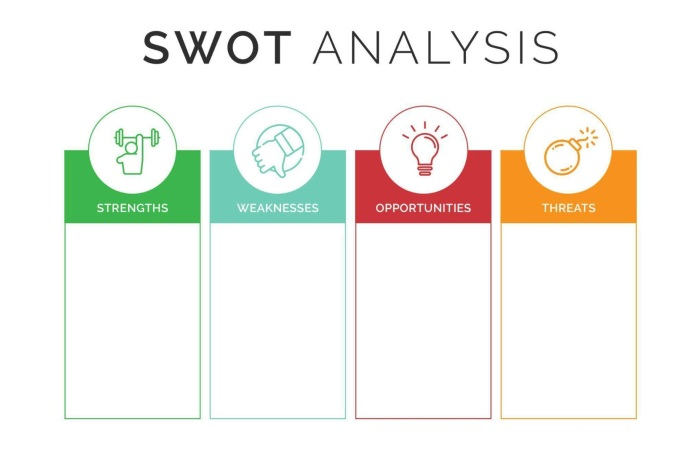
 Data Structure
Data Structure Networking
Networking RDBMS
RDBMS Operating System
Operating System Java
Java MS Excel
MS Excel iOS
iOS HTML
HTML CSS
CSS Android
Android Python
Python C Programming
C Programming C++
C++ C#
C# MongoDB
MongoDB MySQL
MySQL Javascript
Javascript PHP
PHP
- Selected Reading
- UPSC IAS Exams Notes
- Developer's Best Practices
- Questions and Answers
- Effective Resume Writing
- HR Interview Questions
- Computer Glossary
- Who is Who
Framework for Efficient Decision Making
The success of an organization depends on how well the projects are managed and executed. Strategic decision-making plays a vital role in achieving organizational objectives efficiently. The growth of the project management team depends on the manager's decision-making framework, which puts introduces a structure to keep the team moving forward. Efficient decision-making can help the project team lead towards success with high morale, while one wrong decision can also create miscommunication in the team, resulting in huge losses of resources and time. In this article, we shall look into the framework for making efficient strategic decisions.

Strategic Decision-Making and Its Importance in Project Management
Strategic decisions are important in an organization to take control of an ongoing project and lead it to fruition most effectively and efficiently. Project managers can control their team's progress and accommodate any unforeseen changes required in the project with effective decision-making skills. Here is why decision-making is important in project management ?
Strategic decision-making creates a structure for all project deliverables and dependencies, thus reducing the chances of delays in completing a project.
Through a smart decision-making framework, project managers can tackle any unexpected roadblocks in the journey of a project and keep it running smoothly.
Efficient frameworks set aside achievable objectives and clear deadlines for the project management team. It helps them work at their optimum level and keeps their morale up.
Project managers can play to their team's strengths by placing the right individuals in the right jobs through effective decision-making procedures.
It helps the project managers establish a transparent workflow and keep their team on track with their progress at all times.
Having an optimum framework saves huge costs for the company by avoiding repetitive mistakes.
Framework for Efficient Decision-Making in Project Management
Efficient decision-making required a step-by-step process to be followed by project managers during their project journey. Here are the ways one can make crucial strategic decisions in an organization ?
Setting Project Objectives
Project managers must define the project goals that they wish to achieve as their first step in creating strategic decisions. There must be a clearly defined objective to understand the areas where decision-making is required. Setting goals defines the different aspects where project managers need to take a call for the allocation of resources, establishing dependencies, and maintaining a project structure.
Collection of Information
Before a project manager comes to a decision, it is important to get hold of every piece of information related to the problem. It helps project managers make sound decisions and avoid miscommunication. Project managers can obtain information from internal stakeholders such as their team and higher management of the organization as well as external stakeholders such as clients and other suppliers.
Considering The After-Effects of The Decision
Every decision made by a project manager has a ripple effect on their team and project. Even though a decision is made after careful consideration of all information and project objectives, it can sometimes harm the team in terms of excess workload or overwhelming deadlines. In such cases, the manager must make a new decision to maintain a work-life balance in the team. The project manager must consider the after-effects of his decision and take the necessary steps to rectify any hurdles that arise.
Listing Down Alternatives for The Course Of Action
Project managers must consider alternative solutions to support the initial decision for the optimum utilization of resources. Project managers can pursue alternative solutions to keep the team moving forward if their decisions do not produce the desired results.
Decision Implementation
Once the different factors for conclusion are in place, project managers take the required decisions and implement them as executable actions. The project management teams carry out the tasks as outlined in the structure and review their progress at regular intervals. It helps the project managers ensure the smooth functioning of the project and overcome any bottleneck that may delay its execution.
Constant Evaluation of the Decision
Project managers must evaluate their decisions at regular intervals to check whether the required objectives are met. It keeps the process fresh and the team on track at all times. The evaluation also highlights any discrepancies that might require a change in the decision-making of the project managers. It also sets the scope for improvement for all future projects.
Decision-Making Procedures for Project Managers
Efficient decision-making can happen when a project manager follows an intuitive decision-making technique. Decision-making requires experience and analytical skills to consider all aspects and come to a conclusion that serves the purpose well. Given below are some procedures that project managers follow for efficient decision-making ?
Analysis of The Pros and Cons
A pros and cons analysis is a common method for resolving any problem. The procedure involves analyzing the problems from every perspective and making sound decisions. The method involves listing down the various benefits that the project can enjoy from the decision in one column. In the second column, project managers can note the different bottlenecks and adverse effects that the team can face as a result of this decision. With the pros and cons listed, it makes it easier for the project managers to weigh the two and arrive at a conclusion that will be fruitful for everyone.

SWOT Analysis
SWOT analysis is a traditional method of measuring the strengths and weaknesses of the project management team against the opportunities and threats associated with the project. The strengths of a project signify the skills of the individuals that are assigned to the tasks. Weaknesses show the different dependencies and constraints, such as resources and budget. External factors that support the project are opportunities that the team can utilize in their favor. Threats are unforeseen circumstances that can lead to delays or project failure. Analyzing these four factors can help project avengers to arrive at a decision that will be beneficial to the organization.
Multi-Voting Technique
Project managers can use a group discussion session where each team member casts a vote and collectively arrive at a decision. This technique is beneficial when the project management team has multiple open projects and needs to segregate high-priority and low-priority tasks. Based on the votes of the team, managers can compile a list of tasks that need the team's immediate attention. This helps with the allocation of resources without overwhelming the team with tight schedules.

Decision Tree
A decision tree is a visual representation of the problem with the possible solutions, outcomes, and results. Analyzing a decision tree involves creating branches with various alternatives along with their consequences and benefits. It gives a bird's-eye view of complex problems and helps managers optimize their alternatives. Alternatives that do not support the project can be cut out, leading to a final decision that is supportive of the firm.
Conclusion
Project management involves multiple decision-making areas within a given time constraint. Making the right problem-solving move is critical to the success of each project. Project managers must analyze their situation and apply the decision-making framework that works best for their problem.

